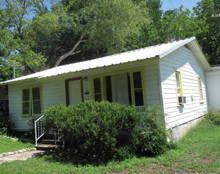Sources for the Laundry Calculator
Last update: April 2011
This page shows where I got my figures for my deluxe
laundry calculator, and is probably of interest to
nobody. This page exists only so that I can properly show
my work. If you're looking to calculate your own laundry
costs, or want tips on saving money on laundry, then the actual
laundry page will be much more useful.
Shame on laundry machine manufacturers
No U.S. manufacturer bothers to list how much water
or energy their models use on a per-load basis.
Shame on them. Laundry calculations would be a lot easier
if the manufacturers deigned to provide this very basic
information about the products they make.
General figures & notes
Sample
price of electricity ($0.15/kWh). My cost
of electricity page.
Average price of gas ($1.23/therm). Dept.
of Energy, avg. for 2009. 1
MCF=10.25 therms,
so divide $/MCF by 10.25 to get $/therm
Average price of water, excluding sewer/wastewater
($2.72/thousand gallons). EPA
(PDF), 2000, p. 29 You might also be interested in the
cost per state, 2003.
Average price of wastewater
($2.72/thousand gallons). USA
Today (2007) says that
wasterwater is pretty much equal to water costs
Total avg. price of
water+wastewater ($5.44/thousand gallons). Sum of above
two figures.
Hot wash temperature:
(106°F/41°C). From the manual for the Asko
WL6511 (p. 18). Note that old machines don't
regulate the temperature, and just use the incoming hot water
temp. Most washer makers don't bother to disclose the
water temperatures used, shame on them.
Warm wash or rinse temperature:
(88°F/31°C). From the manual for the Asko
WL6511 (p. 18). An LG model I found uses
86°F. Older machines don't regulate the temp. and just
mix hot+cold blindly to get warm.
Cold temperature: (-). Some
machines heat cold water to a minimum level to make sure
detergents dissolve properly. The calculator assumes the
cold water isn't heated.
Temperature of groundwater
(57°F). Varies from 35-77°F in the U.S.
Eyeballing a temperature
map, adjusting for population centers, 57°F seems like a
good average.
Wh to heat a gallon of water by 1°F (0.00263). From my water
heaters page.
Therms to heat a gallon of water
by 1° (0.00014). From my water
heaters page.
Loads of laundry per year (392).
EPA.
Top-Loader figures
kWh per load, machine only (0.256).
Modesto
Irrigation Dist. An EPA
Excel Spreadsheet gives
0.21 and the Multi-Housing
Laundry Assoc. gives 0.30
kWh. I'm taking the middle figure.
Cost of electricity per load (4¢). 15¢/kWh x 0.256
kwh = 3.84¢.
Gallons per load (40). California
Energy Commission. MHLA
gives 34
gallons.
Cost of water per load (22¢). $5.44/1000 x 40 =
21.76¢.
Portion of water in wash vs. rinse
cycle (50/50). EnergyGuide.
Portion of water that's hot,
on hot setting (100%). Educated guess.
Top-loaders generally don't heat the water, they rely on the
water coming through the hot water line to already be
heated. (Repair
Clinic)
Portion of water that's hot,
on warm setting (50%). Educated guess.
Gallons of hot water for Hot/Warm setting (30). 20
gallons hot for wash, 10 gallons hot for rinse
Gallons of hot water for
Warm/Warm setting (20). 10 gallons hot for wash, 10
gallons hot for rinse
Gallons of hot water for
Warm/Cold setting (10). 10 gallons hot for wash
Electricity Savings per year by
switching from Hot/Cold to Cold/Cold ($152). 20
gallons hot x 49°F rise x 0.00263 Wh/1°F/gallon x $0.15/kWh
x 392 loads per year
Therms to heat a gallon of water from 57 to 130°F, i.e. 73°F (0.01022). 73° x 0.00014 therms (from "General", above)
Front-Loader figures
Premium for front-loader purchase
($100). According to Sears.com in April 2010,
comparing the cheapest front-loader to the cheapest
top-loader.
Energy savings vs. top-loader (30-85%). EPA
, excluding small washers (less than 3 cu. ft.) to be
fair. That's 120-560 kWh/yr. vs. 800 kWh/yr.
Water savings vs. top-loader (40-75%). EPA
, excluding small washers (less than 3 cu. ft.) to be
fair. That's 10-24 gallons vs. 40 gallons.
Gallons per load (14.7). Oct.
2008 spreadsheet downloaded from the EPA's
clothes washers page.
Gallons per wash cycle (12.2). The average
front-loader uses 14.7 gallons of water according to the
EPA, above. An old version of the user manual for the
Asko WL5611 said it uses 14.3 gallons total and 2.4 gallons
for the Rinse cycle, which would be 11.9 gallons for the
Wash. The Wash is thus 83.2% of the total water. So I figure
a typical front-loader uses 14.7 gallons x 83.2% = 12.2
gallons. From there I apply the kWh and therms to heat water
as per the earlier sources.
Cost of water per load (8¢).
14.7 gallons x $5.44/1000
kWh per load, machine only (0.26).
I've been completely unable to find this information, so I
used the same figure as for a top-loader, which should be
fairly similar, since the real energy savings from a
front-loader is in using less water and thus using less
energy to heat the water. Not
a single manufacturer of Energy Star washers in the
U.S. bothers to publish how much electricity its washers
use per cycle. Shame on
them. Anyone who's got a front-loading washer and a
watt-hour meter, please wash a load in cold and let
me know how much it used.
Cost ef electricity per load (4¢). 15¢/kWh * 0.26
Source of hot water. Front-loaders sold in the U.S. generally have both hot and cold water connections, so the home water heater is doing the water-heating. European front-loaders generally have only a cold water connection, so the washer is heating the water, electrically. The calculator assumes a U.S.-style washer. U.S. washers do generally control the temperature, for both front- and top-loaders, though not all do. (e.g., in Maytag & Whirpool some models do and some don't; one Frigidaire model I found regulates the wash temp but not the rinse.) I checked user manuals in 4/2010 for a plethora of U.S. manufacturers to confirm all the above.
Heat rise for Hot setting (49°F). 57°F
(from "General", above) to 106°F
Heat rise for Warm
setting (31°F). 57°F (from "General", above) to 88°F
Cost of extra
electricity for Hot wash (25¢). 12.7 gallons x 49°F x
0.00263 kWh/gallon/1°F (from "General", above) x 15¢/kWh.
Cost of extra electricity for Warm wash (16¢). 12.7
gallons x 31°F x 0.00263 kWh/gallon/1°F x 15¢/kWh.
Cost of extra electricity for Warm rinse (3¢). 2.5
gallons x 31°F x 0.00263 kWh/gallon x 15¢/kWh.
Cost of gas per Hot wash (11¢). 12.7
gallons x 49°F rise x 0.00014 therms/gallon/1°F x
$1.23/therm.
Cost of gas per Warm wash (7¢). 12.7 gallons x 31°F
rise x 0.00014 therms/gallon/1°F x $1.23/therm.
Cost of gas per Warm rinse (1¢). 2.5 gallons x 31°F
rise x 0.00014 therms/gallon/1°F x $1.23/therm.
Reduction in drying time vs. top-loader (7%). Oak Ridge Natl. Laboratory, 1998
Dryer figures
Electric dryers. Here are the various figures I found, with the sources in parentheses:
Note that you can't use the label on an electric dryer to figure the amount of energy used, because the heating element isn't on the whole time during the drying cycle.
Gas dryers, electric component. Here are various figures for the amount of electricity required to spin the drum.
- 0.21 kWh per load (from my own measurement of a standard-size Kenmore gas dryer for a 45-minute cycle; this is what I use in my calculators)
- 0.30 kWh per load (Modesto
Irrigation District, PDF)
- 0.50 kWh per load (MLA)
Gas dryers, gas. I found various figures for therms per load for clothes dryers:
- 0.17 therms/load (MLA)
- 0.20 therms/load for 5.8 cf dryer (Metropolitan
Utilities District, PDF)
- 0.22 therms/load (City of Ukiah; this is what I use in my calculators)
- 0.25 therms/load for 7.3 cf dryer (Metropolitan Utilities District, PDF)
- 0.28 therms/load (RG&E)
- 18,500 BTUs per hour (JLC)
- 20,000 BTUs per hour (Minnesota
Energy, Metropolitan
Utilities District for 5.8 cf dryer)
- 25,000 BTUs per hour (Metropolitan Utilities District for 7.3 cf dryer)
- 35,000 BTUs per hour (King County, Mark Heard Fuel, Engineering Toolbox)
- 52,000 to 70,000 BTUs per hour, for a comercial dryer (Planet Laundry)
Some readers complained that the figures above
assume that the dryer is operating at full-blast all the
time. But my understanding is that gas dryers do
operate at full-blast all the time, and if you choose a lower
heat setting, then it simply takes longer for your clothes to
dry, so you wind up using the same amount of energy either
way. Besides, my reading of some of the sources above is
that they're truly reporting the energy use per hour, meaning
that they're already accounting for any decreased output rate.
Dryer capacity. On 3/31/11 I looked at every
dryer on Sears.com and most had drums between 5.7 to 8.0 cubic
feet, though some were as large as 8.0 cf, and there were a
few ultra-compact models in the 3.4 to 3.6 cf range.
Note that the dryer size doesn't affect the energy use per
load very much, because a load of wet clothes is going to take
X amount of heat to remove regardless of the dryer's drum size
(assuming that the dryer is big enough to move sufficient air
through the clothes).
Gas vs. Electric market share. About 77% of U.S. dryers are electric, vs. 23% for gas. (EPA, 2001)
Links to related info
- How to calculate the EPA's "modified energy factor" (MEF) for washing machines
- EPA's
test procedures for washing machines (PDF)



